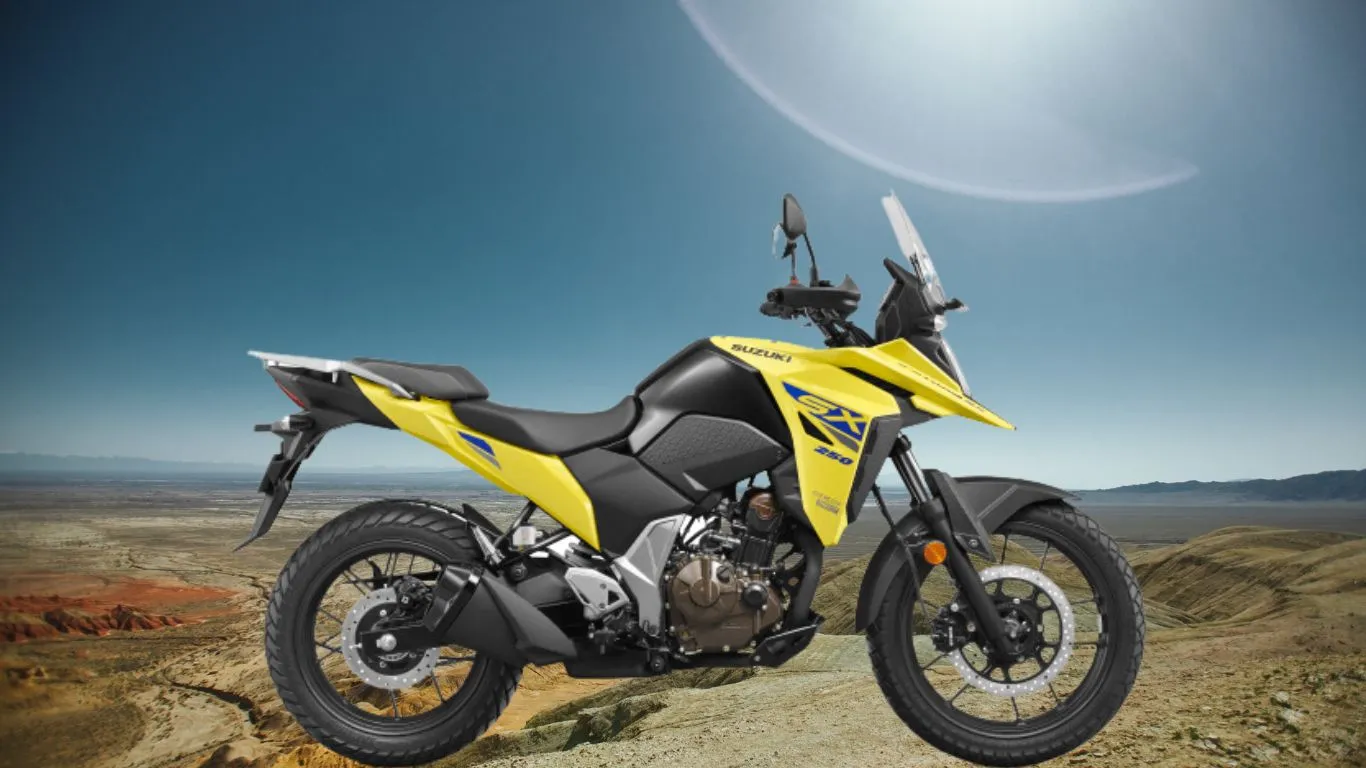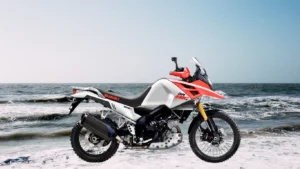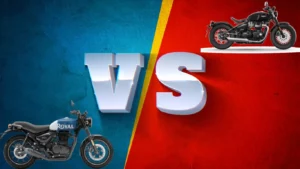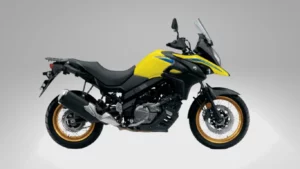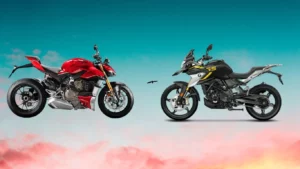Are you intrigued by the evolution of motorcycle technology? Perhaps the intricate transition from the vintage classics to the cutting-edge, high-performance motorcycles we see today fascinates you. In either case, we’re here to take you on an enthralling deep dive into the development of Suzuki’s motorcycle models over the years and how their thrilling evolution has led to some of the most technologically advanced bikes we see on the streets today.
“Every journey is the accumulation of numerous small steps.” Equally, Suzuki’s journey, emblematic of this popular adage, boasts impressive strides in engineering, technology, and aesthetics, embracing change and constantly pushing the envelope. From their first motorized bicycle to their latest state-of-the-art motorcycles, Suzuki’s array of models have evolved immensely, captivating the market and revolutionizing the industry. Join us as we step into the fast-paced world of Suzuki’s innovation, tracing and analyzing the trail they have blazed so far.
The Early Beginnings: Suzuki’s Entry into the Motorcycle Industry
Let’s embark on a journey back in time to the early beginnings of Suzuki’s entry into the motorcycle industry. From humble origins, Suzuki has grown into an industry behemoth, continuously pushing the boundaries of motorcycle manufacturing. As we journey together, prepare to witness the evolution of Suzuki motorcycles, their technological advancements, and their impact on the market.
The Leap from Looms to Motorcycles
Suzuki’s journey into the exciting world of motorcycles was initially anything but predictable. The company, originally established as Suzuki Loom Works in 1909 in Hamamatsu, Japan, was a prominent player in the textile industry. However, a shift in market dynamics following World War II encouraged diversification, and so begun the motorcycle chapter of Suzuki’s story.
- 1952: Release of the ‘Power Free’ – Suzuki stepped into the motorcycle sphere with the launch of ‘Power Free’, a motorized bicycle equipped with a 36cc, two-stroke engine.
- 1953: The ‘Diamond Free’ makes its debut – Building on lessons learned from the Power Free, Suzuki released a new model, the Diamond Free, introducing a double-sprocket gear system that revolutionized rider control.
Also read:
- KTM vs. Suzuki: The Ultimate Off-road Showdown – Choose Your Ride!
- Why Do Suzuki Dirt Bike Cornering So well?
Suzuki and Technological Advancements
As Suzuki settled into the motorcycle world, the company made a name for itself through a series of technological advancements that challenged industry norms.
- 1955: The Suzuki ‘Colleda CO’ – Suzuki made its first real impact with the introduction of the Colleda CO, a 125cc motorcycle featuring a four-stroke OHV single-cylinder engine. This was a marked departure from the prevalent two-stroke engines of the time.
- 1971: Suzuki GT750 – A major milestone in Suzuki’s engineering journey, the GT750 was the first Japanese motorcycle with a liquid-cooled engine. Its innovative design earned it the nickname ‘Water Buffalo’
Market Performance through the Years
Alongside technological developments, Suzuki’s market performance has been notable. From an initial slow start, the company quickly gained momentum in both the domestic and international markets.
- 1960s and 70s: Global Expansion – During this period, Suzuki established a strong foothold in the US and European markets, thanks to a series of popular models like the T20 ‘Super Six’ and the GT range.
- 1980s to present: Enduring Presence – Suzuki continues to dominate markets worldwide, with iconic models such as the GSX-R series and the Hayabusa, asserting the brand’s enduring presence in the industry.
Revolutionary Innovations: Suzuki’s Breakthroughs in Motorcycle Technology
At the very heart of Suzuki’s success lies its unwavering commitment and dedication to groundbreaking innovations. Over the decades, Suzuki has time and again revolutionized the motorcycle industry, delivering technological breakthroughs that have not just advanced its models but have set new standards for the industry at large. Let’s dive in and look at some of Suzuki’s most significant breakthroughs in motorcycle technology.
The Water-Cooled Four-Stroke Engine
Leading the charge in technological progress, Suzuki was one of the pioneers of the water-cooled four-stroke engine for motorcycles. The GSX-R750, introduced in the mid-’80s, took the industry by storm with this engine innovation. The water-cooled four-stroke engine provided improved power output and greater reliability, cementing Suzuki motorcycles as high-performance machines on the global stage.
Suzuki’s Anti-lock Braking System
Safety has always been a key concern for Suzuki, and the company led the market by presenting an anti-lock braking system (ABS) specific for motorcycles. The launch of the DR 650SE in the mid-’90s saw the first use of this feature. By preventing wheel lock-up during instances of heavy braking or when braking on low-friction surfaces, the ABS increased rider safety exponentially, setting a new benchmark in the industry.
- Traction control system: This innovative system, first incorporated in the 2005 GSX-R1000, has significantly increased the safety and performance of Suzuki motorcycles. It helps to regulate torque to prevent loss of traction, thus making it easier for riders to control the motorcycle when accelerating on varying surfaces.
- Riding modes: Suzuki introduced adjustable riding modes in its 2007 B-King model. This has enabled riders to customize their riding experience, adjusting for different road conditions or personal comfort.
Suzuki’s Dual Throttle Valve system
In its relentless pursuit of precision, Suzuki engineered the dual throttle valve system. This technology, initially introduced in the GSX-R1000 model, brings a smooth, responsive feel to the throttle and greater combustion efficiency. As a result, fuel efficiency has improved, and emissions have been significantly reduced, proving that Suzuki is not only concerned with power but also with sustainable riding.
Legendary Models: Suzuki Motorcycles That Left Their Mark
The motorcycle industry has seen a myriad of remarkable models over the years, but a few have set benchmarks in engineering, design, and performance. Among those, several Suzuki motorcycles have etched their mark, setting industry-wide standards whilst also captivating enthusiasts and bikers around the globe. Let’s dive deep into some legendary Suzuki models that have left an indelible imprint on the motorcycle landscape.
The GSX-R750: Champion of the Racetrack
Unveiled in 1985, the GSX-R750 rewrote the rule book for sportbikes. It was lighter, faster, and more agile than any of its competitors at the time. This model was characterized by its exceptionally high power-to-weight ratio, a concept largely drawn from Suzuki’s MotoGP racing experiences. It’s the timeless appeal and design innovation of this model that makes it a unforgettable piece of Suzuki’s legacy.
- Improved aerodynamics for speed and agility.
- Air/oil-cooled engine for efficient operation.
- Aluminum alloy frame for weight reduction.
- Introduced the ‘race replica’ segment to the world.
The Hayabusa: The Speed Demon
Introduced in 1999, the Hayabusa, also known as GSX1300R, took the world by storm by setting a new speed record for production motorcycles. It was not just the top speed that set this model apart, but also its distinctive, aerodynamic design and its unrivaled synthesis of power, torque, and rideability. Even though speed regulations have since curtailed its full potential, the Hayabusa’s aura of speed and power continues to charm motorcycle enthusiasts across the globe.
- First production motorcycle to reach 194 mph.
- Swift acceleration enabled by powerful 1299cc inline-four engine.
- Aerodynamic design to minimize drag and maximize stability.
- Introduced the ‘hyper bike’ class in motorcycle industry.
The Rise of the GSX-R: Suzuki’s Iconic Superbike Series
As we unravel the fascinating history of Suzuki, one cannot ignore the birth and rise of the iconic GSX-R series. Let’s call it Suzuki’s crown jewel in the superbike kingdom. Starting as an ambitious project in the early ’80s, these series have since carved a niche for themselves, pioneering innovations, and redefining superbike performance standards. Let us dive deeper to understand how this even came to be.
Conceptualization and Early Evolution
Pioneered in the 1980s, the GSX-R series began with a single philosophy – to craft a motorcycle that could deliver true race-track performance on the street. Engineers took the daring step to design this machine from the ground up, ensuring that it effortlessly combines functionality and aesthetics.
Breakthrough Engineering
To set the GSX-R series apart, Suzuki didn’t just focus on enhancing power but also on refining the entire riding experience. Aspects like a lightweight aluminum frame, aerodynamic bodywork, and superior suspension system are what made these bikes handle as good as they looked. And who could forget the revolutionary ‘Slingshot’ carburetor that featured in the GSX-R750, designed to offer quicker throttle response?
- Lightweight aluminum frame: This paved the way for higher performance and better handling of the motorcycle.
- Aerodynamic bodywork: Contributed to the superior speed and performance while adding aesthetically to the bike’s design.
- Superior suspension system: Ensured a smoother, more controlled ride even at high speeds.
- ‘Slingshot’ carburetor: Allowed for a picturesque moment of quicker throttle response, revolutionizing motorcycle technology.
Birth of the Legends: GSX-R750 and GSX-R1000
The first of its kind, the GSX-R750, wasn’t just a benison for Suzuki but an industry-disrupting masterpiece. A few years later, Suzuki released the GSX-R1000, aimed at delivering unmatched power with sophisticated control. With these two, Suzuki once again redefined what a motorcycling experience could and should be.
Breaking Barriers: Suzuki’s Impact on Racing and Performance
When discussing motorcycles, it would be incomplete to not touch on racing and performance. Suzuki has a rich legacy in these areas, shaping and driving the wider motorcycle racing industry. Only a few can match the influence that Suzuki has had over the decades in the realm of speed and performance.
Suzuki’s Racing Heritage
Suzuki’s journey in racing is more than just a long tale of competition. It’s a story of innovative design, engineering prowess, and spirited rivalry that has produced motorcycles beyond ordinary. Beginning from their first Grand Prix win in 1962 with rider Ernst Degner, Suzuki continued to build on their racing pedigree launching models like the RG500, which dominated the circuits in the 70s and 80s.
- Their winning streak at the Isle of Man TT invigorated the brand and validated its technological advancements.
- Suzuki’s victories helped cultivate a culture of high-performance engineering and solidified their place in motorcycle racing lore.
Boosting Performance Through Innovation
Performance and innovation have always been interlinked at Suzuki. The company took performance to a new level by continually adopting and leading technological advancements.
- The introduction of the Dual Throttle Valve system on the GSX-R series enhanced engine response while maintaining stability and control.
- The launch of the Hayabusa, known for its unparalleled speed, became a benchmark for performance motorcycles.
- Suzuki’s advancements in reducing weight while increasing torque have been key to their racing success.
Setting the Pace: Suzuki Motorcycles in Contemporary Racing
Even in contemporary times, Suzuki has shown no signs of slowing down. Pioneering models like the GSX-RR have continued to make their mark in global competitions, including the MotoGP series.
- The GSX-RR, with its innovative technology and aerodynamic design, is a testament to Suzuki’s commitment to racing.
- Suzuki’s racing legacy serves as an inspiration to other manufacturers and continues to push the boundaries of what is possible in the motorcycle racing industry.
Exploring Off-Road: Suzuki’s Adventures in Dirt Bikes
When it comes to off-road adventure, Suzuki’s dirt bikes stand out with their exceptional performance and versatility. Since their debut, these remarkable motorcycles have played an integral role in shaping the off-road biking culture around the globe, providing an adventurous riding experience combined with unparalleled reliability. Let’s delve deeper into Suzuki’s thrilling dirt bikes adventure.
Journey Towards Off-Road Domination
Suzuki broadened its horizon beyond conventional road bikes, keenly exploring the untamed terrain of off-road biking. It was their adept engineering and progressive design that paved the path for robust, dominant dirt bikes. Truly, their diversity of models caters to bikers, from trail-lovers to motocross competitors.
The Birth of the DR-Z Series
- DR-Z400S: Marketed as an off-road bike that could also handle pavement, DR-Z400S offered the best of both worlds. Its sturdy and flexible design made it an instant favorite.
- DR-Z125: Built as a beginner-friendly dirt bike, the DR-Z125 offered a balanced mix of power and control, welcoming newcomers to dirt biking.
Embracing Competition: Motocross Innovation
Conquering motocross tracks, Suzuki’s RM and RM-Z models showcased their competitive edge. These motorcycles, known for their lightweight frame and potent engines, held high the Suzuki flag in international motocross tournaments.
Technology in Dirt Biking: Suzuki’s Trail
Tackling the trails required a special set of technological advancements. Suzuki dirt bikes integrated features for off-road challenges, such as longer suspension travel, protective parts for the undercarriage, and knobby tires for better grip, all of which significantly enhanced off-road riding experiences.
Commuter Champions: Suzuki Motorcycles for Everyday Riding
Diminishing the gap between performance and practicality, Suzuki’s unique range of motorcycles for everyday riding offers a remarkable blend of power, comfort, and efficiency.
Pioneering Everyday Bikes: The Suzuki Approach
Suzuki’s approach to everyday bikes is rooted in their philosophy of ‘performance meets convenience’. This mindset is reflected in models such as the V-Strom 650 and the GSX-S750, both of which seamlessly integrate high-end sports technology with features tailored for commuting and city riding.
Key Features:
- Ample storage space for essentials
- Comfort seating for long rides
- Enhanced fuel efficiency for daily commuting
- Advanced suspension system for smooth handling
Reinforcing Versatility: Suzuki’s Multi-Purpose Models
To further fortify the versatility in their lineup, Suzuki has also introduced multi-purpose models that cater to both city commuting and weekend getaways. The versatility shines through in models such as the Bandit 1250S and the SV650A, designed with adaptability at their core.
Multi-Purpose Model Highlights:
- Dual-purpose capabilities: for both city commuting and long distance rides
- Lightweight construction: for easy maneuverability
- Adaptable performance features: accommodating various riding conditions
- User-friendly interface: ensuring a seamless riding experience
The presence of these bikes is a testament to Suzuki’s commitment to providing reliable solutions for everyday commuting, while ensuring that riders don’t miss out on the thrill of motorcycling.
The Rise of the Burgman Series: Mastering Urban Mobility
When it comes to mastering urban mobility, Suzuki’s Burgman series has effectively left a mark. This line of scooters was designed specifically with the city rider in mind, pairing strong performance with innovative features for an effortless ride every time. A blend of power, design, and convenience, the Burgman series represents Suzuki’s continued prowess in manufacturing versatile two-wheelers.
Design Philosophy of the Burgman Series
The Burgman series was built on a design philosophy of “comfort releasing power.” This twin-pronged approach focuses on providing riders with a machine that is not only powerful but also comfortable. The ergonomic design emphasizes the rider’s ease of use, minimizing fatigue during intra-urban travel.
Performance and Power
- Engine: The Burgman series sports powerful engines – from the entry-level Burgman Street’s 125cc motor to the Burgman 650’s powerful V-twin engine. This variety in engine powers ensures each rider can find an engine that matches their expectations of speed and fuel efficiency.
- Acceleration: The Burgman’s excellent acceleration, due in part to its carefully calibrated CVT, allows for swift transitions – crucial for urban riding.
Innovative features
Suzuki did not skimp on cutting-edge features when releasing the Burgman series. Its models include a spacious under-seat compartment, aerodynamic windscreen, and a technologically advanced instrument panel. The advanced ABS system, combined with reliable disc brakes, gives riders enhanced control and confidence on city roads.
Impact on Urban Mobility
Seamlessly blending power, design, and convenience, the Burgman series has transformed urban mobility, making city travel more enjoyable and effortless. Its compact yet commanding presence underscores Suzuki’s shift towards creating advanced mobility solutions for busy city streets.
Cruising in Style: Suzuki’s Lineup of Touring Bikes
Taking the open road on a motorcycle is an experience that cannot be understated. When it comes to equipping riders for such journeys, Suzuki’s range of touring motorcycles triumphs, offering unrivaled comfort combined with power and fuel efficiency. Each model has its distinct features that make long-distance riding a dream and not a chore. Let’s delve into the details.
The Comfort King: The Suzuki Boulevard Series
When you think of a touring bike, the Suzuki Boulevard series immediately springs to mind. Designed with rider comfort at its core, they come with leather seating, hard saddlebags, and footboards. A low seat height allows you to firmly plant your feet on the ground, which adds to the riding comfort.
- Powerful V-Twin engine, delivering smooth and robust performance
- Classic design, incorporating modern aesthetics
- Variety of models to suit different riders’ preferences
The Sport Tourer: Suzuki V-Strom Series
The V-Strom series is Suzuki’s bid at capturing the attention of the sport-touring market. These bikes offer a blend of sport bike performance and touring bike comfort. Riders love them for their versatility and all-round capabilities.
- Advanced Traction Control System, ensuring optimal power delivery
- Comfortable ergonomics for long distance riding
- Suzuki’s Dual Throttle Valve system, enhancing the fuel system
The Fully Loaded Tourer: Suzuki Cavalcade
Famed for its luxury, the Cavalcade is a fully-equipped tourer from Suzuki, rich in technological advantages. With its massive fairing, ample luggage space, and smooth V4 engine, it promises a comfortable and enjoyable long tour.
- Car-like instrument panel with a built-in stereo system and advanced control features
- Extremely comfortable seating for both rider and pillion
- Powerful and smooth V4 engine, perfectly suited for touring
Fuel Efficiency and Sustainability: Suzuki’s Green Motorcycle Solutions
As environmental concerns rise globally, Suzuki has been at the forefront of the shift towards more sustainable transportation. By introducing cleaner, more fuel-efficient engines and exploring alternative energies, Suzuki continues to reinvent its motorcycle range in response to the demand for greener solutions.
Adapting to the Eco-friendly Wave: Suzuki’s Lean Burn Technology
To jumpstart its green initiative, Suzuki led the way with its Lean Burn technology. Designed to improve fuel efficiency, it pairs controlled fuel injection with an optimized air-fuel mixture to reduce waste and emit cleaner exhaust.
- Reduced fuel consumption: The Lean Burn technology significantly diminishes the fuel intake.
- Lower emission: It also expels fewer pollutants into the atmosphere, aligning with global emission standards.
- Improved performance: Despite the lowered fuel consumption, Lean Burn technology does not compromise performance, making it a win-win.
Electric Horizons: Suzuki’s Exploration into Electric Motorcycles
Suzuki made a bold statement about its commitment to sustainability by announcing its venture into electric motorcycles. Experimenting with both hybrid and full-electric models, Suzuki seeks to reduce its carbon footprint and practice responsible production.
- Hybrid Models: These motorcycles combine the power of a petrol engine with an electric motor, providing a convenient and eco-friendly alternative for everyday commuting.
- Full-Electric Models: Suzuki’s electric motorcycles are a zero-emission alternative, reinforcing the brand’s green ethos.
Sustainable Work Ethics: Suzuki’s Manufacturing Processes
It’s not just the motorcycles themselves; Suzuki is committed to sustainable practices in its manufacturing as well. Through efficient resource management and waste reduction strategies, Suzuki strives to minimize its overall environmental impact.
- Waste Management: The company has implemented a robust waste management system that helps reduce and recycle industrial waste.
- Energy Efficiency: Suzuki adheres to energy-efficient manufacturing processes to reduce greenhouse gas emissions.
Conclusion
Through its illustrious journey, Suzuki has constantly pushed boundaries, utilizing advanced technology to develop motorcycles that offer top-tier performance without sacrificing comfort or efficiency. The company has consistently stayed on top of changing market demands while catering both to adrenaline junkies and everyday commuters, proving their adaptability, innovation, and commitment to motorcycling excellence.
From their foray into the industry with loom machines, to the awe-inspiring models of sport, touring, and everyday bikes, and their venture into eco-friendly technologies, Suzuki’s evolution is a testament to their relentless pursuit of growth and passion for delivering exceptional experiences to riders worldwide.
